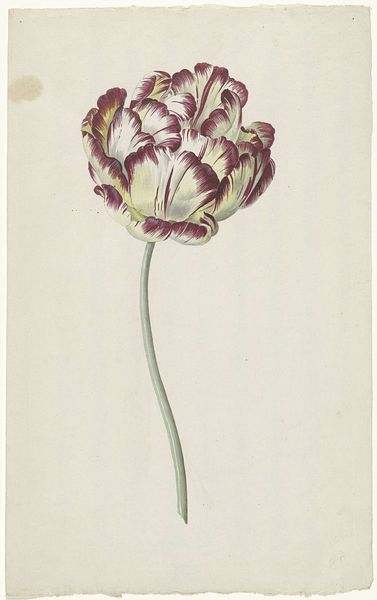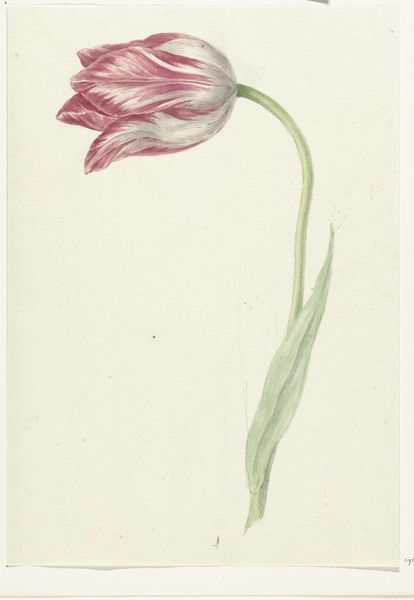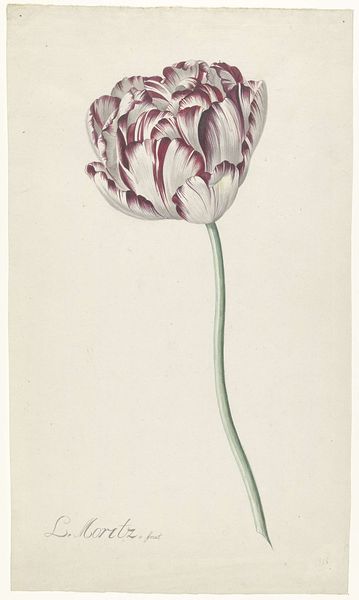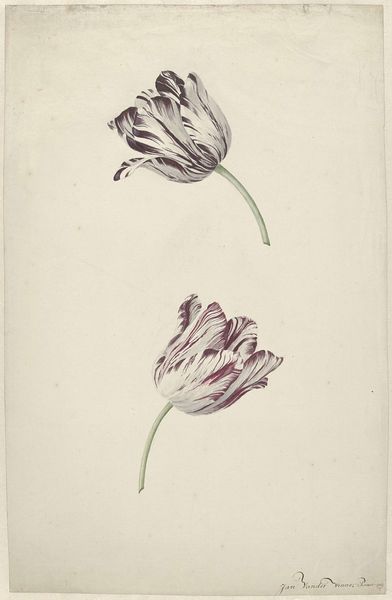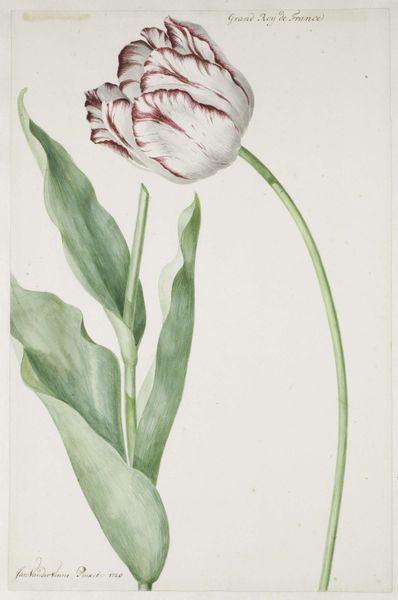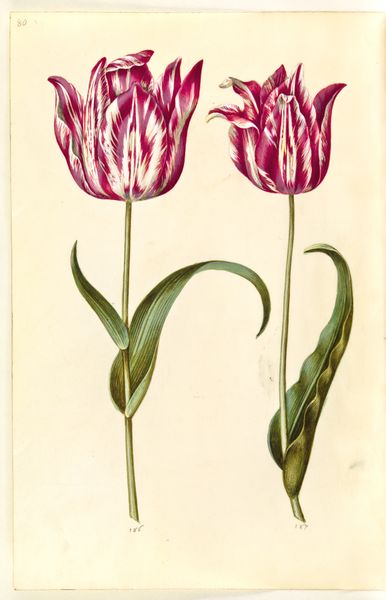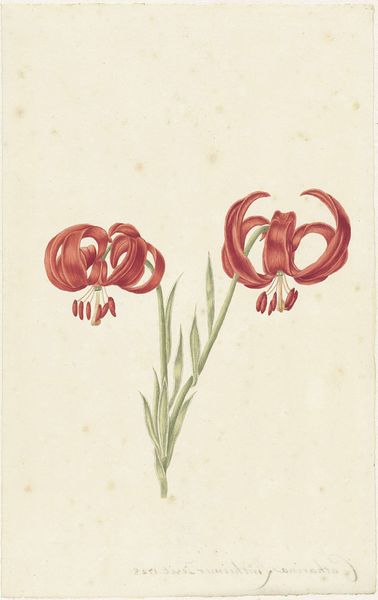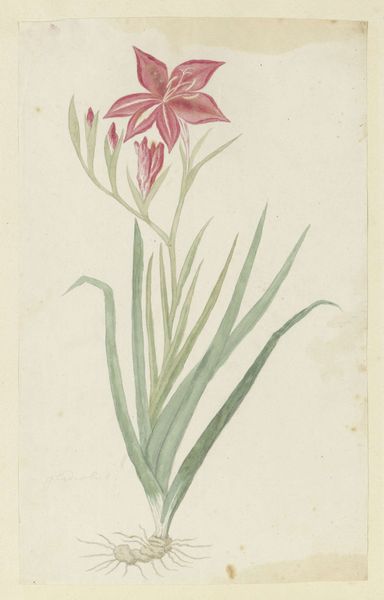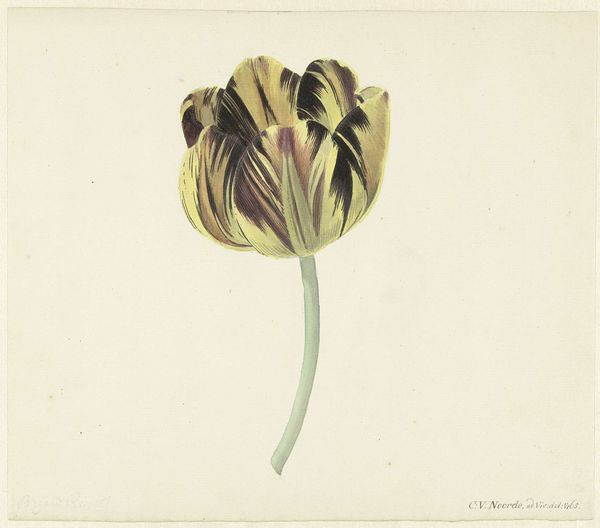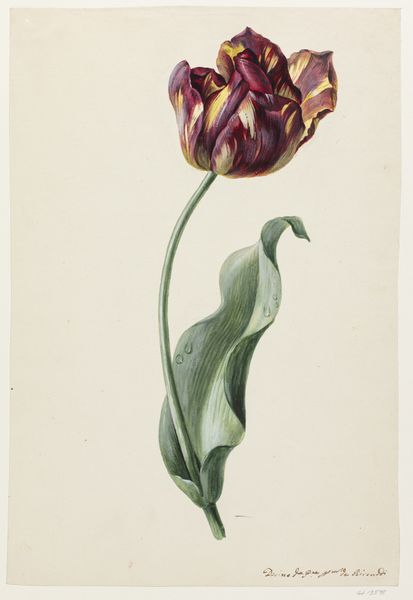
drawing, watercolor
#
drawing
#
baroque
#
watercolor
#
coloured pencil
#
botanical art
#
watercolor
Dimensions: height 166 mm, width 134 mm
Copyright: Rijks Museum: Open Domain
Daniël Marot presents us with a study of a tulip named after Cardinal de Fleury. The tulip, particularly in the 17th and 18th centuries, was more than just a flower; it was a symbol of luxury and status, a reflection of the era's obsession with collecting and displaying wealth. The tulip’s form here is striking, its petals dramatically striped. This striping, caused by a virus, was ironically what made these tulips so prized. In a sense, it mirrors humanity’s complex relationship with beauty and decay. Consider how floral motifs weave through art history, from ancient Egyptian lotus blooms symbolizing rebirth to the vanitas paintings of the Dutch Golden Age, where wilting flowers represented life’s transience. The tulip, however, found a unique place in this lexicon, embodying not just beauty but also speculative frenzy during the "Tulip Mania." The emotional intensity surrounding these flowers, a blend of desire and anxiety, is palpable even today. The image of the flower is destined to resurface, perhaps in a contemporary context, bearing new layers of meaning, yet forever echoing its opulent past.
Comments
No comments
Be the first to comment and join the conversation on the ultimate creative platform.

